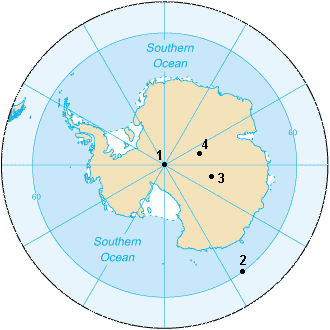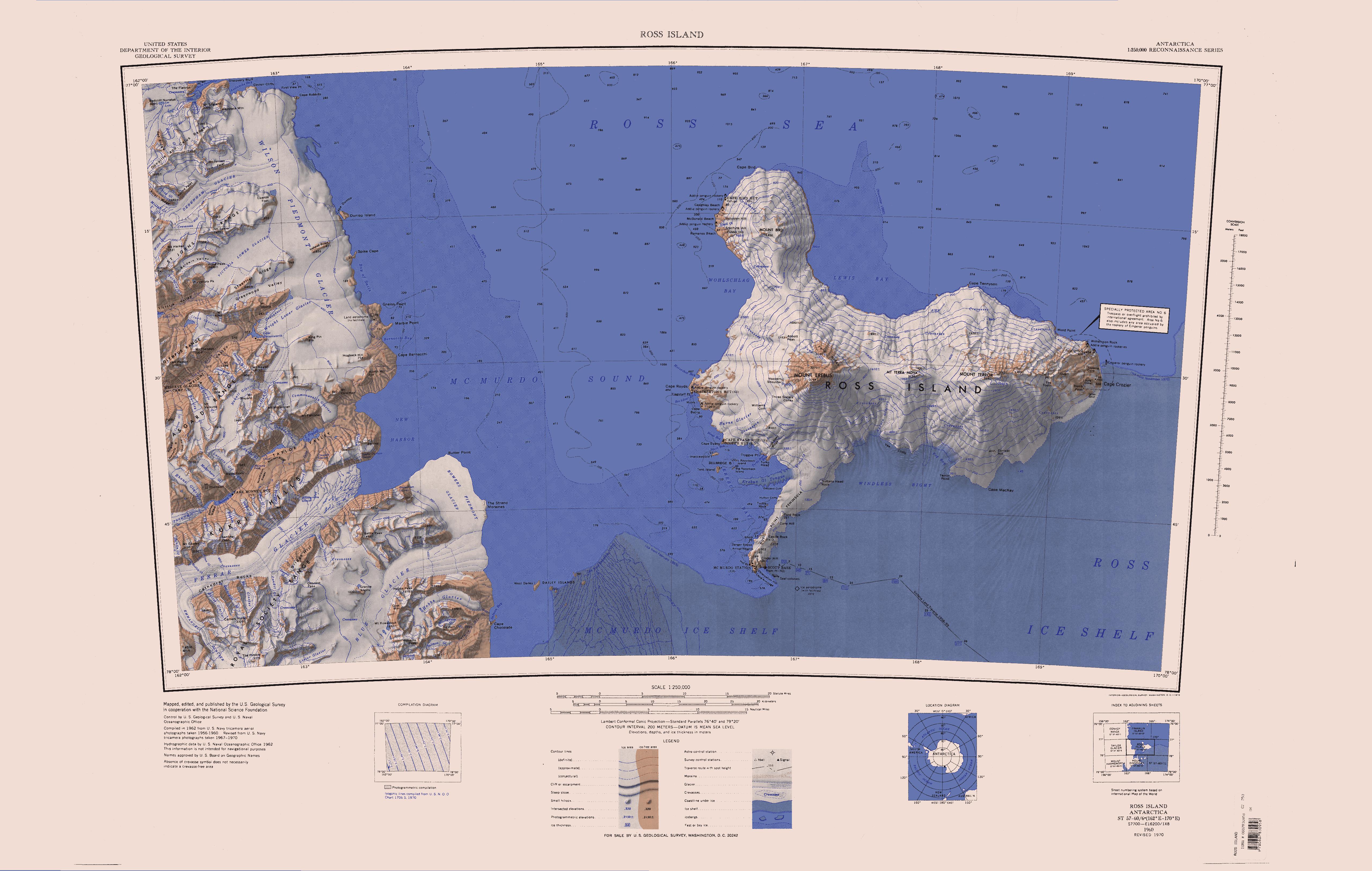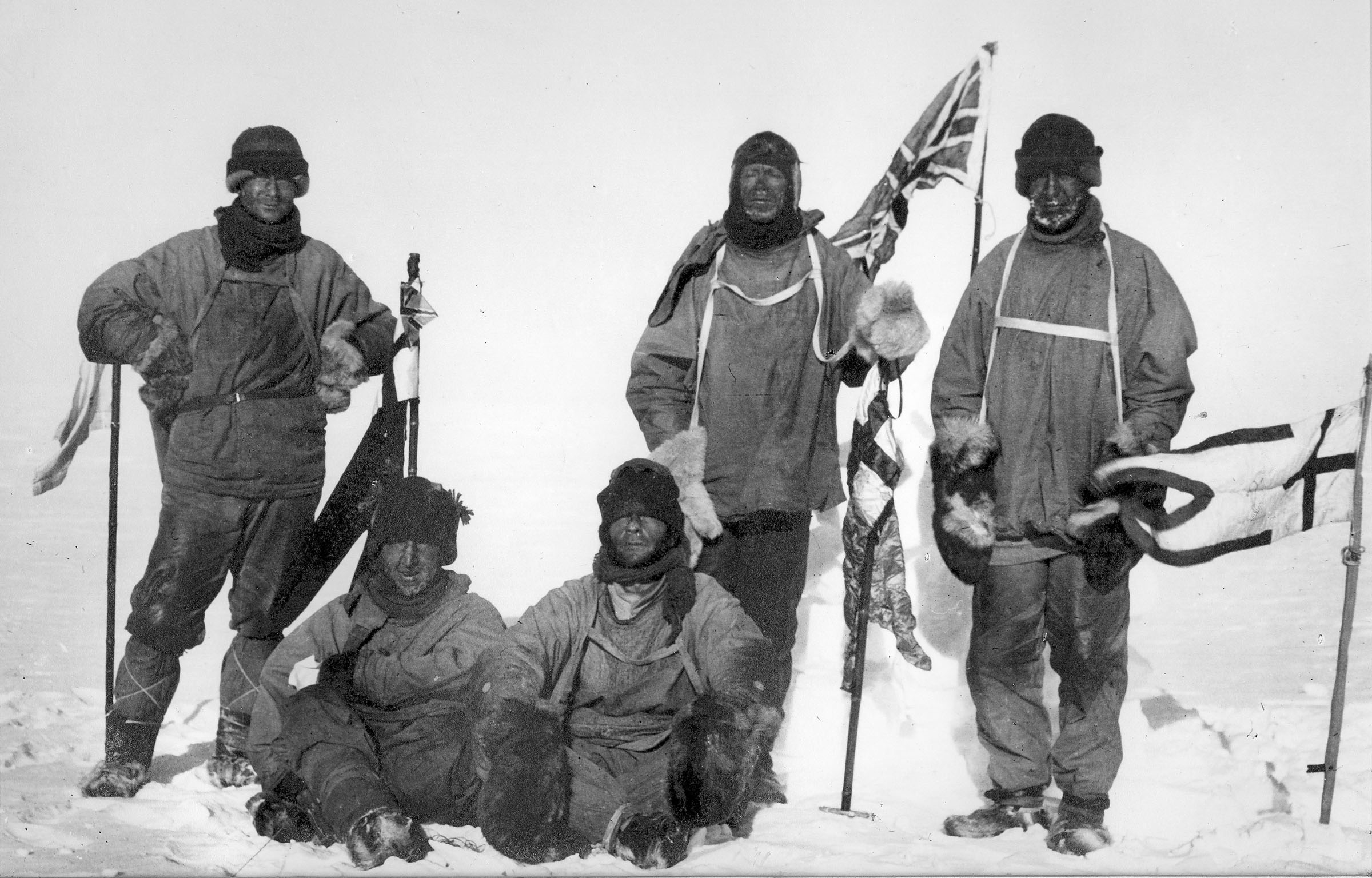|
Scott Coast
Scott Coast () is the portion of the coast of Victoria Land, Antarctica between Cape Washington and Minna Bluff. It was named by the New Zealand Antarctic Place-Names Committee in 1961 after Captain Robert Falcon Scott, Royal Navy, leader of the ''Discovery'' Expedition (1901–1904) and the British Antarctic Expedition (1910-1913), who died on the return journey from the South Pole The South Pole, also known as the Geographic South Pole or Terrestrial South Pole, is the point in the Southern Hemisphere where the Earth's rotation, Earth's axis of rotation meets its surface. It is called the True South Pole to distinguish .... Much of the early exploration of this coastline was accomplished by Scott and his colleagues, and many of the names in the region were bestowed by him. Localities * Blue Glacier * Dreschhoff Peak * Mount Band * Nostoc Flats * Robbins Hill * Stoner Peak * Weidner Ridge External links Coasts of Victoria Land {{ScottCoast-geo ... [...More Info...] [...Related Items...] OR: [Wikipedia] [Google] [Baidu] |
Scott Coast Map
Scott may refer to: Places Canada * Scott, Quebec, municipality in the Nouvelle-Beauce regional municipality in Quebec * Scott, Saskatchewan, a town in the Rural Municipality of Tramping Lake No. 380 * Rural Municipality of Scott No. 98, Saskatchewan United States * Scott, Arkansas * Scott, Georgia * Scott, Indiana * Scott, Louisiana * Scott, Missouri * Scott, New York * Scott, Ohio * Scott, Wisconsin (other) (several places) * Fort Scott, Kansas * Great Scott Township, St. Louis County, Minnesota * Scott Air Force Base, Illinois * Scott City, Kansas * Scott City, Missouri * Scott County (other) (various states) * Scott Mountain (other) (several places) * Scott River, in California * Scott Township (other) (several places) Elsewhere * 876 Scott, minor planet orbiting the Sun * Scott (crater), a lunar impact crater near the south pole of the Moon *Scott Conservation Park, a protected area in South Australia Lists * Scott Point (disambiguat ... [...More Info...] [...Related Items...] OR: [Wikipedia] [Google] [Baidu] |
South Pole
The South Pole, also known as the Geographic South Pole or Terrestrial South Pole, is the point in the Southern Hemisphere where the Earth's rotation, Earth's axis of rotation meets its surface. It is called the True South Pole to distinguish from the south magnetic pole. The South Pole is by definition the southernmost point on the Earth, lying antipode (geography), antipodally to the North Pole. It defines geodetic latitude 90° South, as well as the direction of true south. At the South Pole all directions point North; all lines of longitude converge there, so its longitude can be defined as any degree value. No time zone has been assigned to the South Pole, so any time can be used as the local time. Along tight latitude circles, clockwise is east and counterclockwise is west. The South Pole is at the center of the Southern Hemisphere. Situated on the continent of Antarctica, it is the site of the United States Amundsen–Scott South Pole Station, which was established in 19 ... [...More Info...] [...Related Items...] OR: [Wikipedia] [Google] [Baidu] |
Stoner Peak
Briggs Hill () is a conspicuous ice-free hill, high, standing on the south side of Ferrar Glacier between Descent Glacier and Overflow Glacier in Victoria Land, Antarctica. It was charted by the British Antarctic Expedition, 1910–13, under Scott, and named by the United States Advisory Committee on Antarctic Names (US-ACAN) for Raymond S. Briggs, United States Antarctic Research Program meteorologist at McMurdo Station in 1962, and station scientific leader there in 1963. Location Briggs Hill is in the northeast of the Royal Society Range. It faces Ferrar Glacier to the northwest. and is bound by the Descent Glacier to the southwest and the Overflow Glacier to the northeast. Descent Pass is to the southeast, leading towards Granite Knolls and the Blue Glacier. Features Features and nearby features include: Mount Huxley . A mountain, high, between lower Condit Glacier and Descent Glacier, marginal to Ferrar Glacier. Named in 1992 by US-ACAN after Leonard Huxley, edi ... [...More Info...] [...Related Items...] OR: [Wikipedia] [Google] [Baidu] |
Robbins Hill
Bettle Peak () is a peak, high, standing west of Bowers Piedmont Glacier and north of the Granite Knolls in Victoria Land. It was named by the United States Advisory Committee on Antarctic Names (US-ACAN) for James F. Bettle, a United States Antarctic Research Program meteorologist and scientific leader at McMurdo Station in 1962. Location Bettle Peak is the highest peak of a group of hills that lies to the east of Briggs Hill in the Royal Society Range. The group is bordered by Ferrar Glacier and New Harbour to the north, Overflow Glacier to the west, Blue Glacier to the south and Bowers Piedmont Glacier to the east. Glaciers Herbertson Glacier . A small alpine glacier which drains from the cliff that forms the south margin of New Harbour, about west-southwest of Butter Point. Named by the BrAE (1910–13), presumably for British geographer Andrew John Herbertson of Oxford University. Amos Glacier . A glacier, long, flowing southeast from Bettle Peak to a ju ... [...More Info...] [...Related Items...] OR: [Wikipedia] [Google] [Baidu] |
Nostoc Flats
''Nostoc'', also known as star jelly, troll's butter, spit of moon, fallen star, witch's butter (not to be confused with the fungi commonly known as witches' butter), and witch's jelly, is the most common genus of cyanobacteria found in a variety of both aquatic and terrestrial environments that may form colonies composed of filaments of moniliform cells in a gelatinous sheath of polysaccharides. It may also grow symbiotically within the tissues of plants, providing nitrogen to its host through the action of terminally differentiated cells known as heterocysts. ''Nostoc'' is a genus that includes many species that are diverse in morphology, habitat distribution, and ecological function. ''Nostoc'' can be found in soil, on moist rocks, at the bottom of lakes and springs, and rarely in marine habitats. It may also be found in terrestrial temperate, desert, tropical, or polar environments. The name ''Nostoc'' was coined by Paracelsus and is a combination of the English ''nost''ri ... [...More Info...] [...Related Items...] OR: [Wikipedia] [Google] [Baidu] |
Mount Band
Mount Band () is a mountain on the Scott Coast of Victoria Land. Its name stems from the profusion of colored lichens appearing in bands on brown rocks in the mountains of Victoria Land in Antarctica Antarctica () is Earth's southernmost and least-populated continent. Situated almost entirely south of the Antarctic Circle and surrounded by the Southern Ocean (also known as the Antarctic Ocean), it contains the geographic South Pole. .... References * Mountains of Victoria Land Scott Coast {{ScottCoast-geo-stub ... [...More Info...] [...Related Items...] OR: [Wikipedia] [Google] [Baidu] |
Dreschhoff Peak
Dreschhoff Peak () in Antarctica is named after Gisela A.M. Dreschhoff, a physicist at the Space Technology Center, University of Kansas, who conducted radioactivity surveys and other field work in various parts of Antarctica, including Victoria Land Victoria Land is a region in eastern Antarctica which fronts the western side of the Ross Sea and the Ross Ice Shelf, extending southward from about 70°30'S to 78th parallel south, 78°00'S, and westward from the Ross Sea to the edge of the Ant ..., for 11 field seasons, 1976–89. References Mountains of Victoria Land Scott Coast {{ScottCoast-geo-stub ... [...More Info...] [...Related Items...] OR: [Wikipedia] [Google] [Baidu] |
Blue Glacier (Antarctica)
Blue Glacier () is a large glacier which flows into Bowers Piedmont Glacier about south of New Harbour, in Victoria Land, Antarctica. It was discovered by the British National Antarctic Expedition (BrNAE) under Robert Falcon Scott, 1901–04, who gave it this name because of its clear blue ice at the time of discovery. Location Blue Glacier rises to the north of Armitage Saddle, and flows north. The coastal range that borders the lower Koettlitz Glacier and the McMurdo Ice Shelf lies to the east, and the Royal Society Range is to the west. In its lower section the Blue Glacier turns to the east and joins the Bowers Piedmont Glacier on the west coast of the McMurdo Sound. Left tributary glaciers Glaciers entering from the left (west) flowing from the Royal Society Range, include (from south to north) Salient, Hooker, Mitchell, Spring, Covert, Amos Glacier and Geoid Glacier. Salient Glacier . A glacier draining northeast into the head of the Blue Glacier from the slopes ... [...More Info...] [...Related Items...] OR: [Wikipedia] [Google] [Baidu] |
Terra Nova Expedition
The ''Terra Nova'' Expedition, officially the British Antarctic Expedition, was an expedition to Antarctica which took place between 1910 and 1913. Led by Captain Robert Falcon Scott, the expedition had various scientific and geographical objectives. Scott wished to continue the scientific work that he had begun when leading the ''Discovery'' Expedition from 1901 to 1904, and wanted to be the first to reach the geographic South Pole. He and four companions attained the pole on 17 January 1912, where they found that a Norwegian team led by Roald Amundsen had preceded them by 34 days. Scott's party of five died on the return journey from the pole; some of their bodies, journals, and photographs were found by a search party eight months later. The expedition, named after its supply ship, was a private venture financed by public contributions and a government grant. It had further backing from the Admiralty, which released experienced seamen to the expedition, and from the Royal ... [...More Info...] [...Related Items...] OR: [Wikipedia] [Google] [Baidu] |
Victoria Land
Victoria Land is a region in eastern Antarctica which fronts the western side of the Ross Sea and the Ross Ice Shelf, extending southward from about 70°30'S to 78th parallel south, 78°00'S, and westward from the Ross Sea to the edge of the Antarctic Plateau. It was discovered by Captain James Clark Ross in January 1841 and named after Victoria of the United Kingdom, Queen Victoria. The rocky promontory of Minna Bluff is often regarded as the southernmost point of Victoria Land, and separates the Scott Coast to the north from the Hillary Coast of the Ross Dependency to the south. History Early explorers of Victoria Land include James Clark Ross and Douglas Mawson. In 1979, scientists discovered a group of 309 Meteorite, meteorites in Antarctica, some of which were found near the Allan Hills in Victoria Land. The meteorites appeared to have undergone little change since they were formed at what scientists believe was the birth of the Solar System. In 1981, Lichen, lichens fo ... [...More Info...] [...Related Items...] OR: [Wikipedia] [Google] [Baidu] |
Discovery Expedition
The ''Discovery'' Expedition of 1901–1904, known officially as the British National Antarctic Expedition, was the first official British exploration of the Antarctic regions since the voyage of James Clark Ross sixty years earlier (1839–1843). Organized on a large scale under a joint committee of the Royal Society and the Royal Geographical Society (RGS), the new expedition carried out scientific research and geographical exploration in what was then largely an untouched continent. It launched the Antarctic careers of many who would become leading figures in the Heroic Age of Antarctic Exploration, including Robert Falcon Scott who led the expedition, Ernest Shackleton, Edward Wilson, Frank Wild, Tom Crean and William Lashly. Its scientific results covered extensive ground in biology, zoology, geology, meteorology and magnetism. The expedition discovered the existence of the only snow-free Antarctic valleys, which contains the longest river of Antarctica. Further achie ... [...More Info...] [...Related Items...] OR: [Wikipedia] [Google] [Baidu] |
Royal Navy
The Royal Navy (RN) is the naval warfare force of the United Kingdom. It is a component of His Majesty's Naval Service, and its officers hold their commissions from the King of the United Kingdom, King. Although warships were used by Kingdom of England, English and Kingdom of Scotland, Scottish kings from the early Middle Ages, medieval period, the first major maritime engagements were fought in the Hundred Years' War against Kingdom of France, France. The modern Royal Navy traces its origins to the English Navy of the early 16th century; the oldest of the British Armed Forces, UK's armed services, it is consequently known as the Senior Service. From the early 18th century until the World War II, Second World War, it was the world's most powerful navy. The Royal Navy played a key part in establishing and defending the British Empire, and four Imperial fortress colonies and a string of imperial bases and coaling stations secured the Royal Navy's ability to assert naval superior ... [...More Info...] [...Related Items...] OR: [Wikipedia] [Google] [Baidu] |






